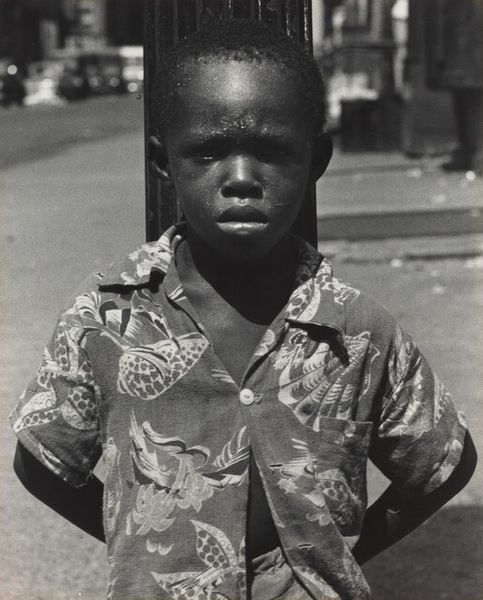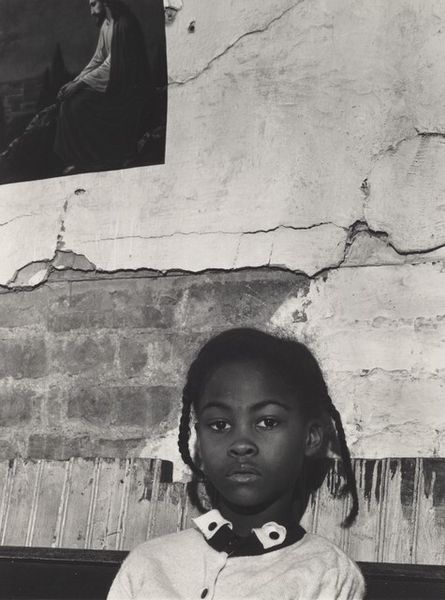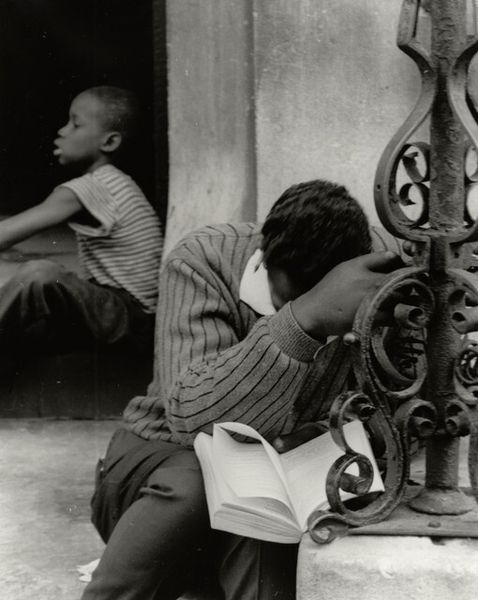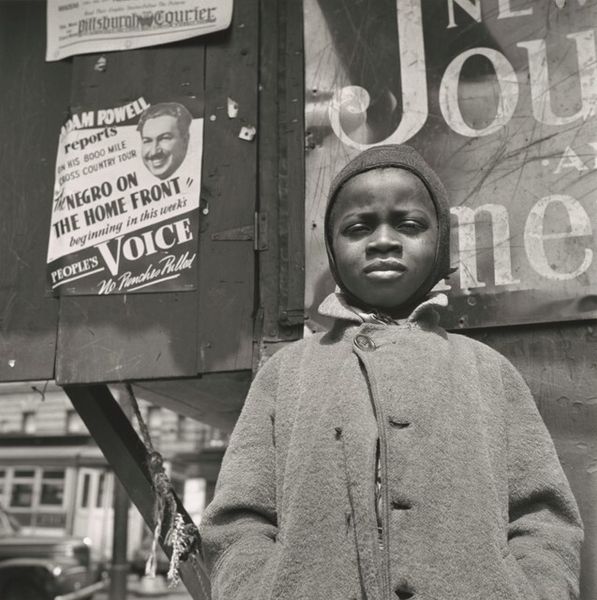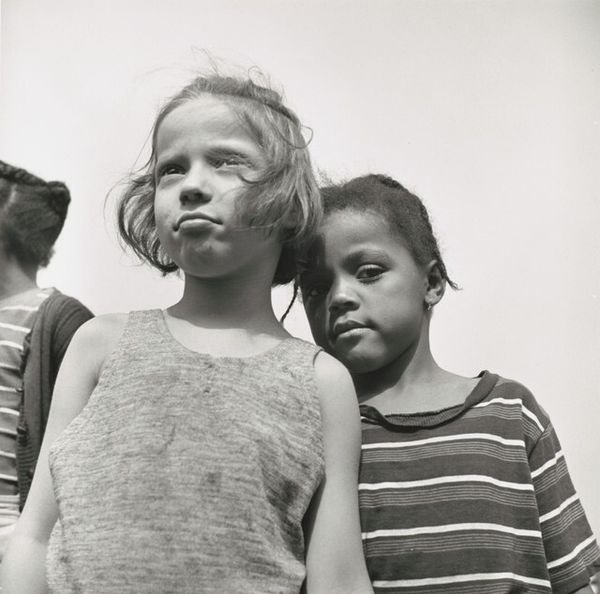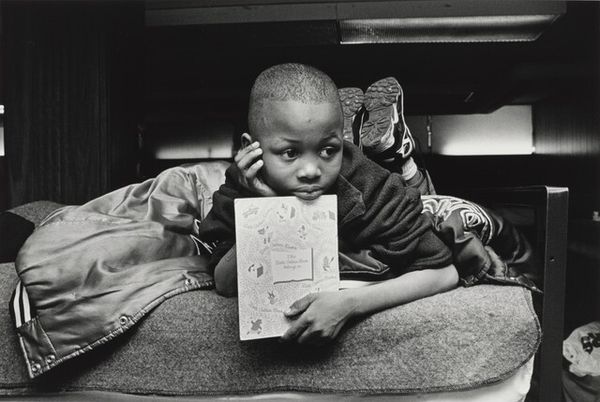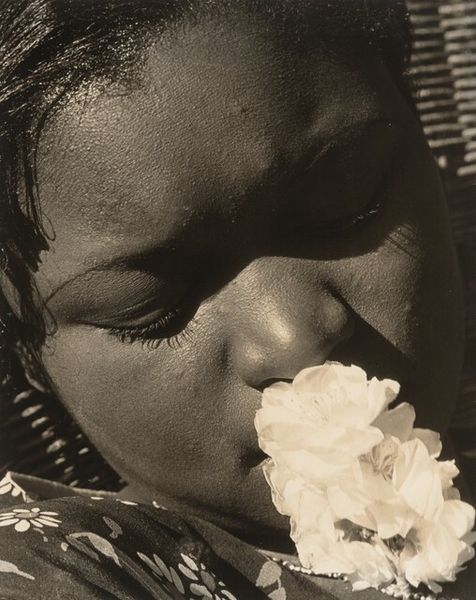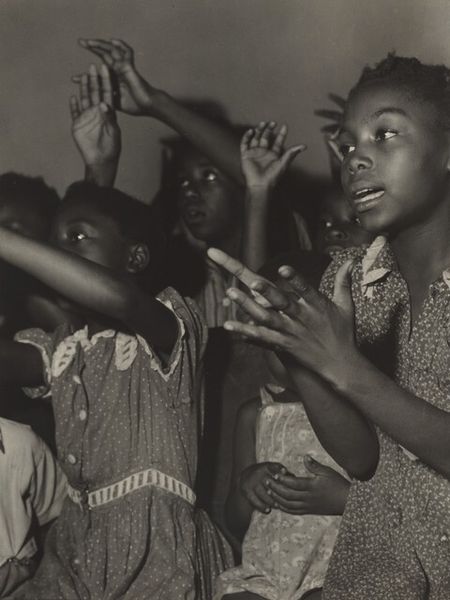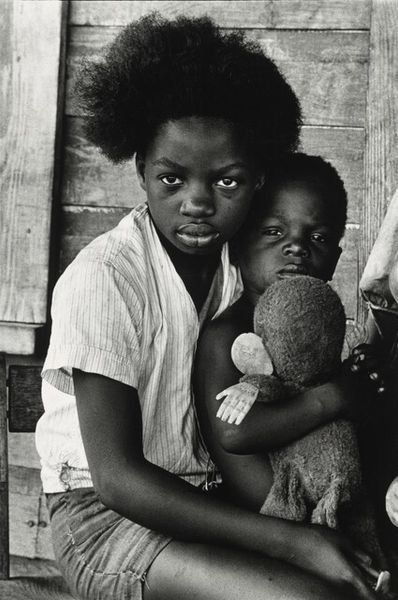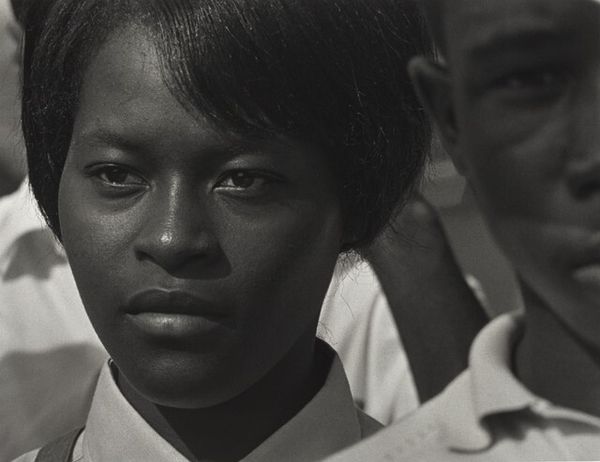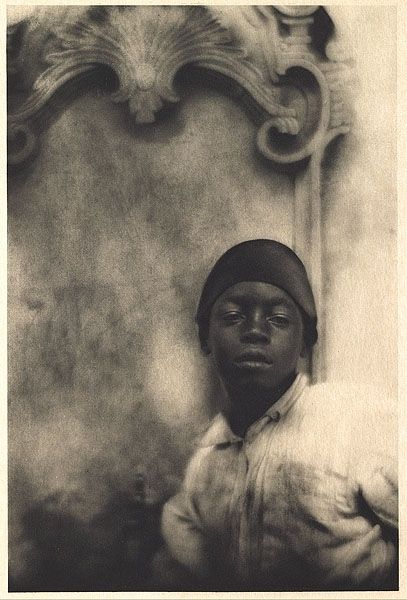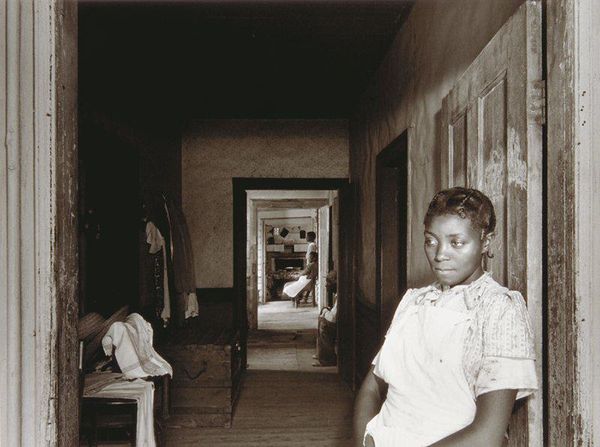
Dimensions: sheet: 35.2 × 27.6 cm (13 7/8 × 10 7/8 in.) image: 29.2 × 25.1 cm (11 1/2 × 9 7/8 in.)
Copyright: National Gallery of Art: CC0 1.0
Editor: Here we have Gordon Parks’s "Portrait of a Young Girl, Harlem," from 1943, a gelatin-silver print. I’m really struck by the directness of her gaze. It feels almost confrontational. What do you see in this piece? Curator: For me, it's about understanding the socio-economic forces shaping the Harlem community during that era. Parks used photography not just as an artistic medium, but as a tool for social documentation. Think about the material conditions: the rationing of resources during wartime, the available technology shaping the gelatin-silver printing process, and even the cotton of her dress sourced from specific regions. These seemingly minor details actually tell a story about how these materials came to be, what their value was, and the context for both the girl, and her community. How do these constraints, or lack of choice, impact this photograph? Editor: That's a perspective I hadn't considered. I was mainly focusing on the subject herself, seeing it as a very personal portrait. I guess, though, you’re highlighting how even a "personal" portrait is ultimately shaped by material and economic forces. So it is about considering more than the emotional affect but asking what sort of constraints were in place here for Parks as the photographer? Curator: Exactly! Understanding those limits is crucial. And consider the labor involved in every stage, from the photographer, to production, all the way up to distribution of those materials: cotton, silver. Think about the relationship with the Black Arts Movement which was heavily influenced by production in the communities. It’s about shifting away from celebrating singular artistic genius to focus instead on collaborative making as activism. Editor: So by looking at it through a materialist lens, we are understanding it within the circumstances of labor and production during this moment in Harlem and photographic history. It’s not just about art, but a statement on economic reality. Curator: Precisely. And that approach helps reveal how intertwined art and life truly are. Editor: I'll never look at a photograph the same way again! Curator: Nor should you. Keep challenging those assumptions!
Comments
No comments
Be the first to comment and join the conversation on the ultimate creative platform.
